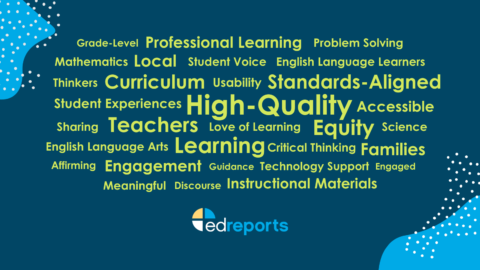High-Quality Materials and High Expectations Open Doors for Students
Educator Jonathon Medeiros tells a story about what happened at his school when students were given access to texts that challenged them to think and inspired them to learn.
Related Resources
article
Educators Sound Off: How I define high-quality curricula
EdReports reviewers from around the country share the importance of high-quality curricula that speak to students' perspectives and lived experiences.
article
Teacher Voices—A Crucial Building Block for an Effective Curriculum Selection
Teachers sound off on what every district leader should know about including educator voices in the materials adoption process.
article
High-Quality Materials Empower and Support Teachers
High school English teacher Jodi Hufendick discusses the importance of teacher voice in the EdReports review process and why educator reviews are so vital to student learning.


